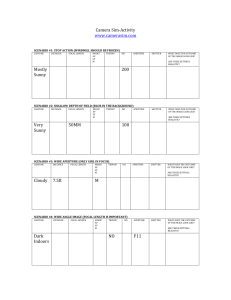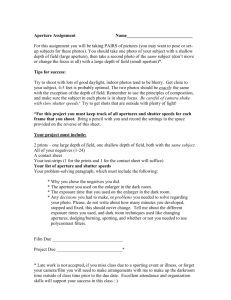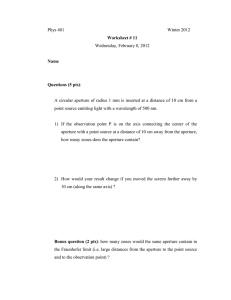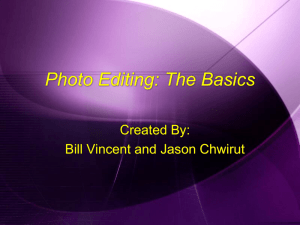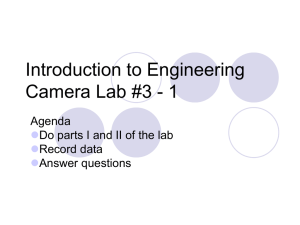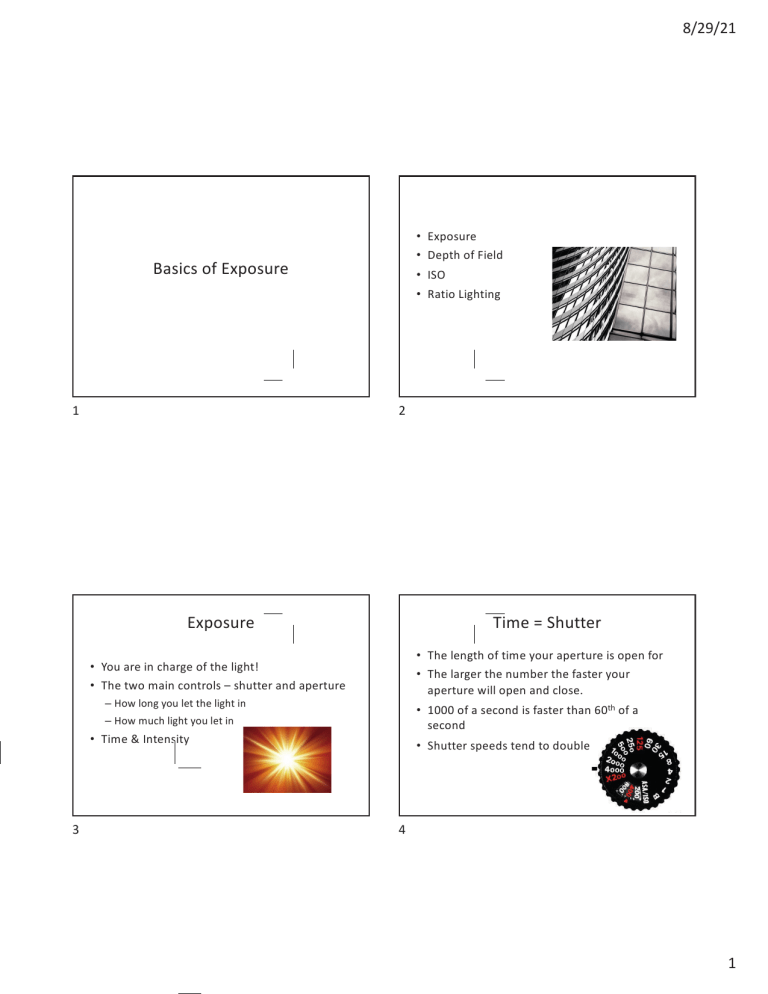
8/29/21 • Exposure • Depth of Field Basics of Exposure • ISO • Ratio Lighting 1 2 Exposure Time = Shutter • The length of time your aperture is open for • The larger the number the faster your aperture will open and close. • You are in charge of the light! • The two main controls – shutter and aperture – How long you let the light in • 1000 of a second is faster than 60th of a second – How much light you let in • Time & Intensity 3 • Shutter speeds tend to double 4 1 8/29/21 Time = Motion • Fast shutter speed 5 • Slow shutter speed 6 Latency • in film photography, the invisible configuration of silver halide crystals on a piece of film after exposure to image-bearing focused light seen upon processing • Digital – the ability of the light to keep building up continuously as long as the lens is open – The buffer keeps over writing itself 7 8 2 8/29/21 Intensity Focal Length? • Aperture • Controls how much light is let in for a specified time • The distance from the lens to the film, when focused on a subject at infinity • Affect depth • Referred to as an F-stop • The ratio is between the diameter of the aperture in the lens and the focal length of the lens. 9 10 Standard F-stops – Full Stops Aperture Controls Depth • The smaller the aperture, the deeper the depth • The wider the aperture, the shallower the depth • F2 is a large aperture • F32 is a small aperture • Got it? 11 12 3 8/29/21 Depth of What? Can be a useful tool • Depth of field • Depth of field refers to the range of distance that appears acceptably sharp http://www.cambridgeincolour.com/tutorials/depth-of-field.htm 13 14 Tells the viewer what you want them to look at Rules of Depth • Isolates an object in the frame 15 • The shorter your focal length, the smaller the aperture, the greater the depth 16 4 8/29/21 Reciprocity The relationship between intensity and time • The longer the focal length, the larger the aperture, the shallower the depth of field Each variable affects another variable 17 18 ISO • In digital it is matter of amplification – how much amplification is applied to the signal from the image sensor. • Increased chip voltage needed to compensate for light variance • The smaller the photo pitch (photosite size) – The more noise is created a higher amplification – (less efficient signal to noise ratio • That is why small point and shoots are so noisy! 19 20 5 8/29/21 Typical ISO Numbers Affects Exposure • 100, 200, 400, 800, 1600..ect • Since most cameras base calibration is at 100, the higher you go , the noisier the chip 21 22 Review of Aperture/Shutter/ISO Ratio Lighting • The term "lighting ratio" is a quantitative measure of the difference between two light sources • A 1:5 ratio would mean that one side of the object would be 5 times as bright as the other • https://youtu.be/6-NhJua5NFA 23 24 6 8/29/21 1:1 Ratio Ratio is controlled by Light Rembrandt Understood That 25 26 7
